Our word!
The montain called...
we MUST go!

Since snowboarding's inception as an established winter sport, it has developed various styles, each with its own specialized equipment and technique. The most common styles today are: freeride, freestyle, and freecarve/race. These styles are used for both recreational and professional snowboarding. While each style is unique, there is overlap between them.
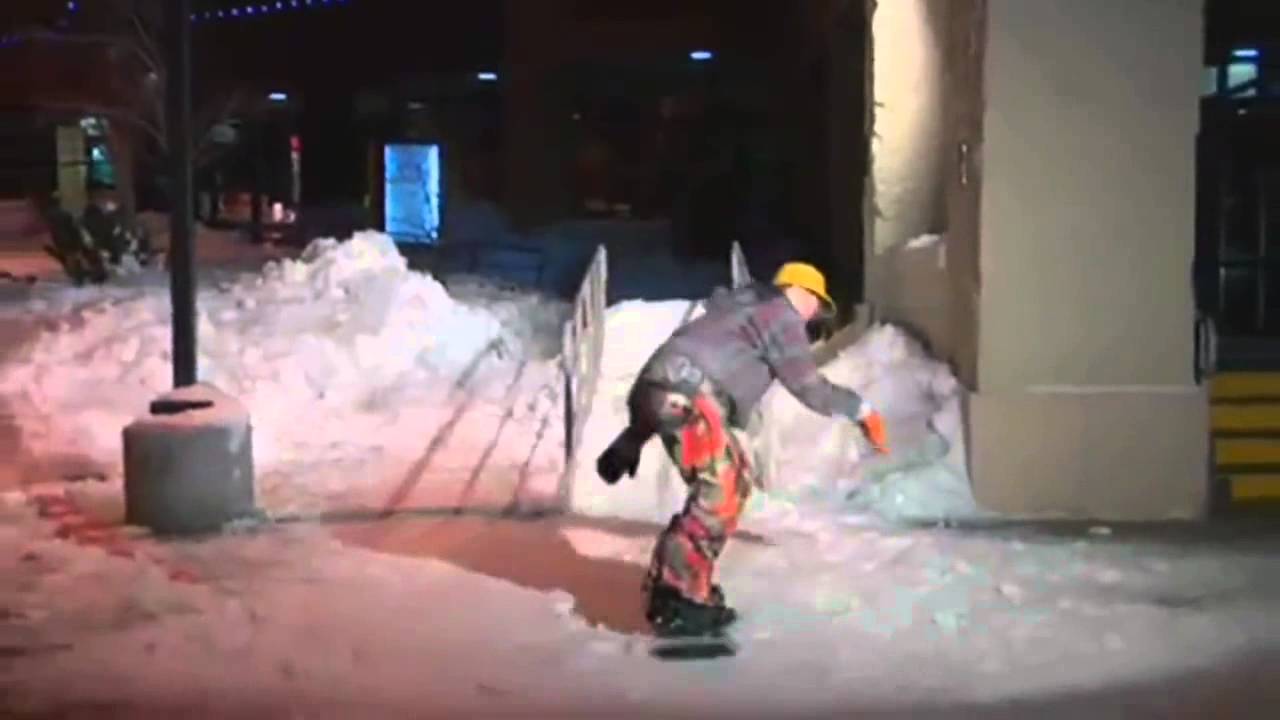
"Jibbing" is the term for technical riding on non-standard surfaces, which usually includes performing tricks. The word "jib" is both a noun and a verb, depending on the usage of the word. As a noun: a jib includes metal rails, boxes, benches, concrete ledges, walls, vehicles, rocks and logs. As a verb: to jib is referring to the action of jumping, sliding or riding on top of objects other than snow.[30] It is directly influenced by grinding a skateboard. Jibbing is a freestyle snowboarding technique of riding. Typically jibbing occurs in a snowboard resort park but can also be done in urban environments.
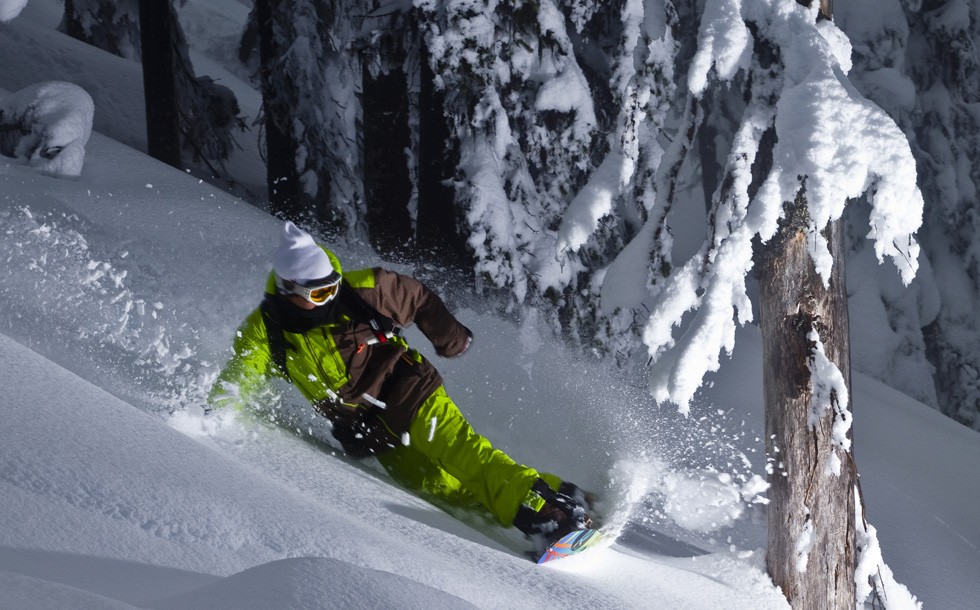
Freeriding is a style without a set of governing rules or set course, typically on natural, un-groomed terrain. The basic allows for various snowboarding styles in a fluid motion and spontaneity through naturally rugged terrain. It can be similar to freestyle with the exception that no man-made features are utilized. See also Backcountry snowboarding.
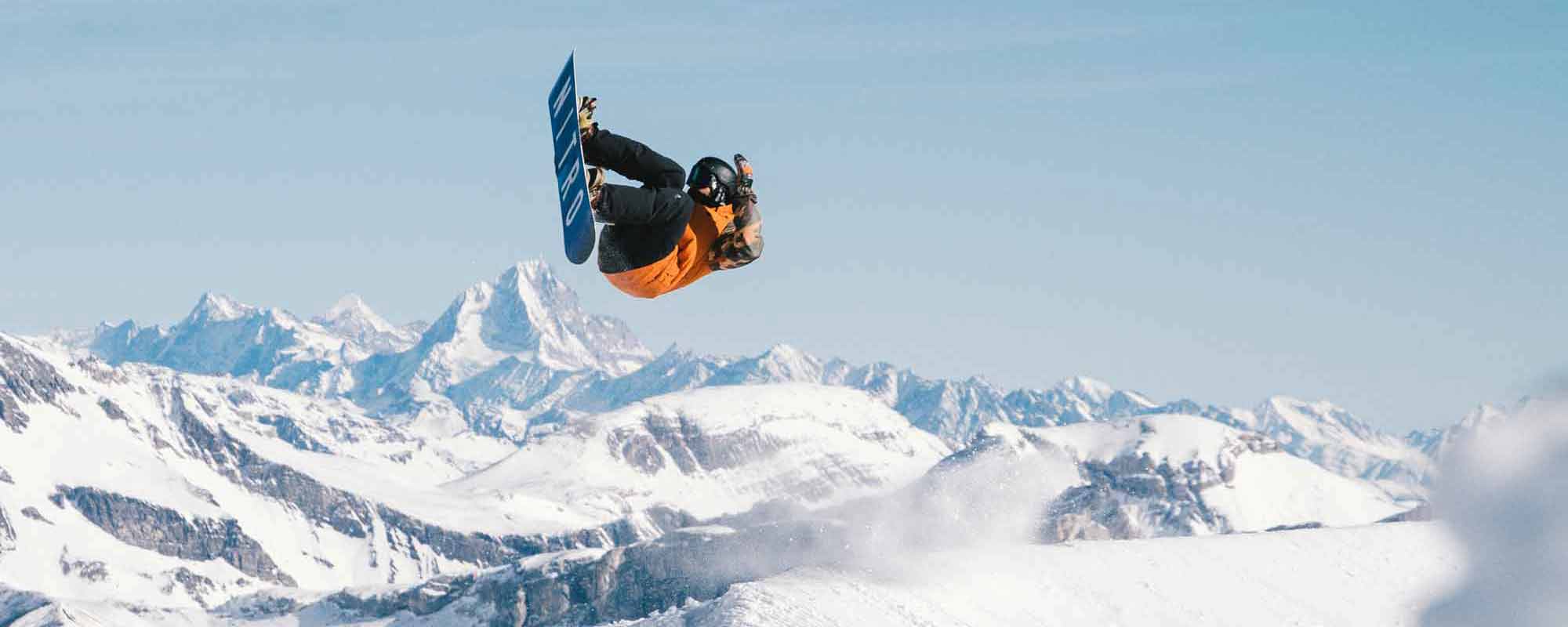
Freestyle snowboarding is any riding that includes performing tricks. In freestyle, the rider utilizes natural and man-made features such as rails, jumps, boxes, and innumerable others to perform tricks. It is a popular all-inclusive concept that distinguishes the creative aspects of snowboarding, in contrast to a style like alpine snowboarding.
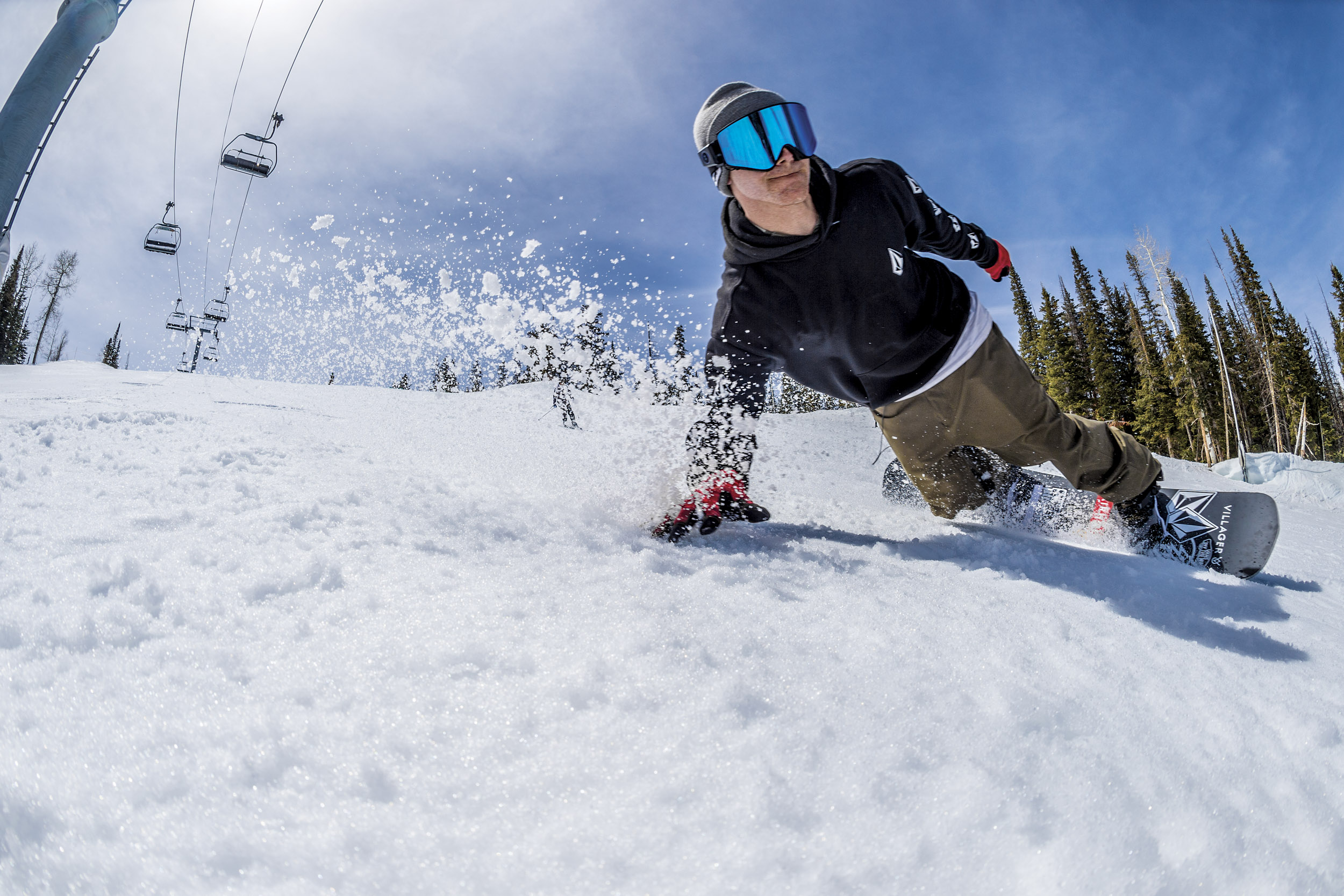
Alpine snowboarding is a discipline within the sport of snowboarding.[31] It is practiced on groomed pistes. It has been an Olympic event since 1998. Sometimes called freecarving, this takes place on hard packed snow or groomed runs and focuses on carving linked turns, much like surfing or longboarding. Little or no jumping takes place in this discipline. Alpine Snowboarding consists of a small portion of the general snowboard population, that has a well connected social community and its own specific board manufacturers. Alpine Snowboard equipment is a ski-like hardshell boot and plate binding system with a true directional snowboard that is stiffer and narrower to manage linking turns with greater forces and speed.[32] Shaped skis can thank these "freecarve" snowboards for the cutting-edge technology leading to their creation.[33] A skilled alpine snowboarder can link numerous turns into a run placing their body very close to the ground each turn, similar to a motocross turn or waterski carve. Depending on factors including stiffness, turning radius and personality this can be done slowly or fast. Carvers make perfect half-circles out of each turn, changing edges when the snowboard is perpendicular to the fall line and starting every turn on the downhill edge. Carving on a snowboard is like riding a roller coaster, because the board will lock into a turn radius and provide what feels like multiple Gs of acceleration.[34] Alpine snowboarding shares more visual similarities with skiing equipment than it does with snowboarding equipment.[35] Compared to freestyle snowboarding gear:[36] boards are narrower, longer, and stiffer to improve carving performance boots are made from a hard plastic shell bindings have a bail or step-in design and are sometimes placed on suspension plates to provide a layer of isolation between an alpine snowboarder and the board
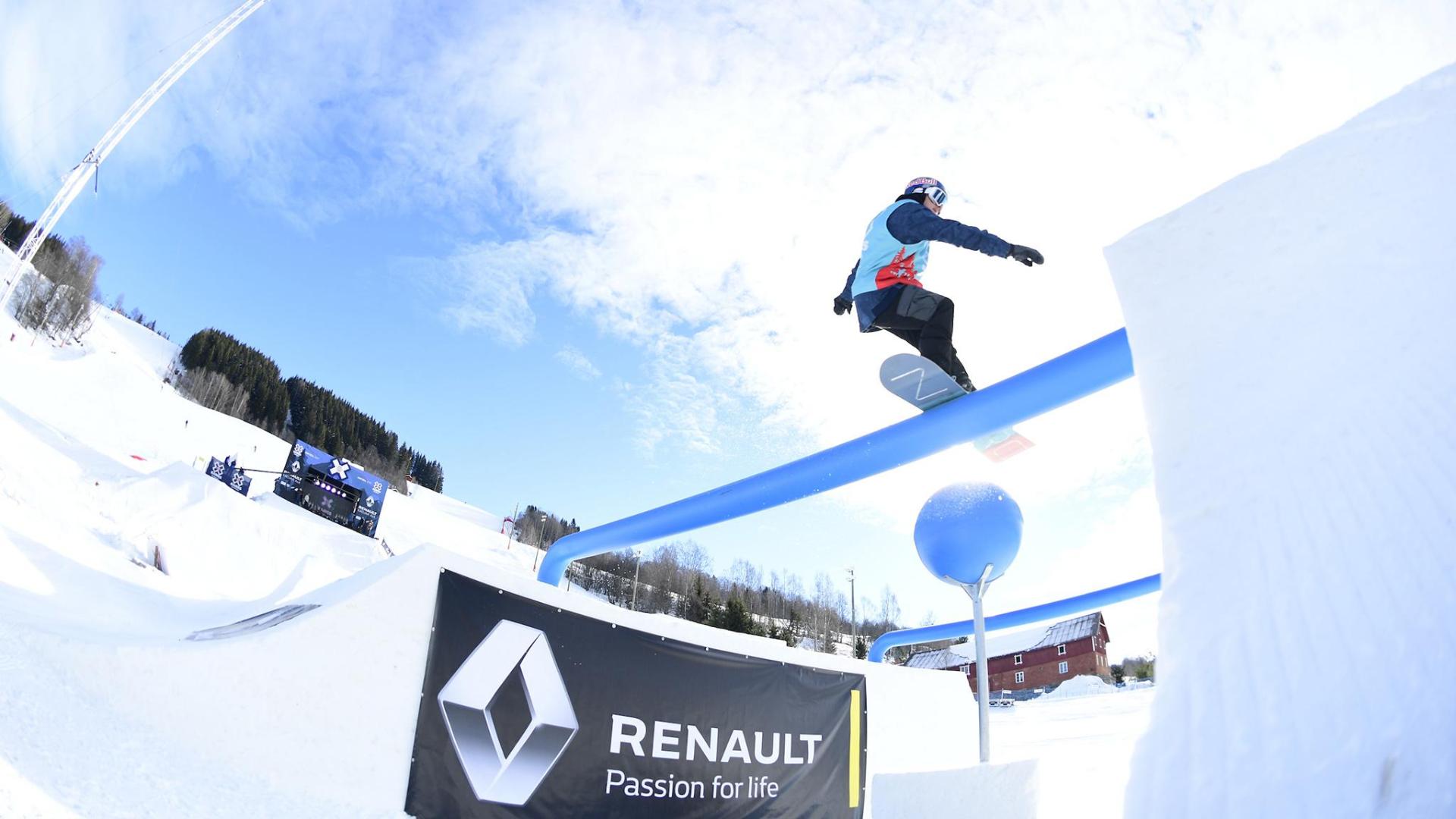
Competitors perform tricks while descending a course, moving around, over, across, up, or down terrain features. The course is full of obstacles including boxes, rails, jumps, jibs, or anything else the board or rider can slide across. Slopestyle is a judged even and winning a slopestyle contest usually comes from successfully executing the most difficult line in the terrain park while having a smooth flowing line of difficult, mistake-free tricks performed on the obstacles. However, overall impression and style can play factor in winning a slopestyle contest and the rider who lands the hardest tricks will not always win over the rider who lands easier tricks on more difficult paths.
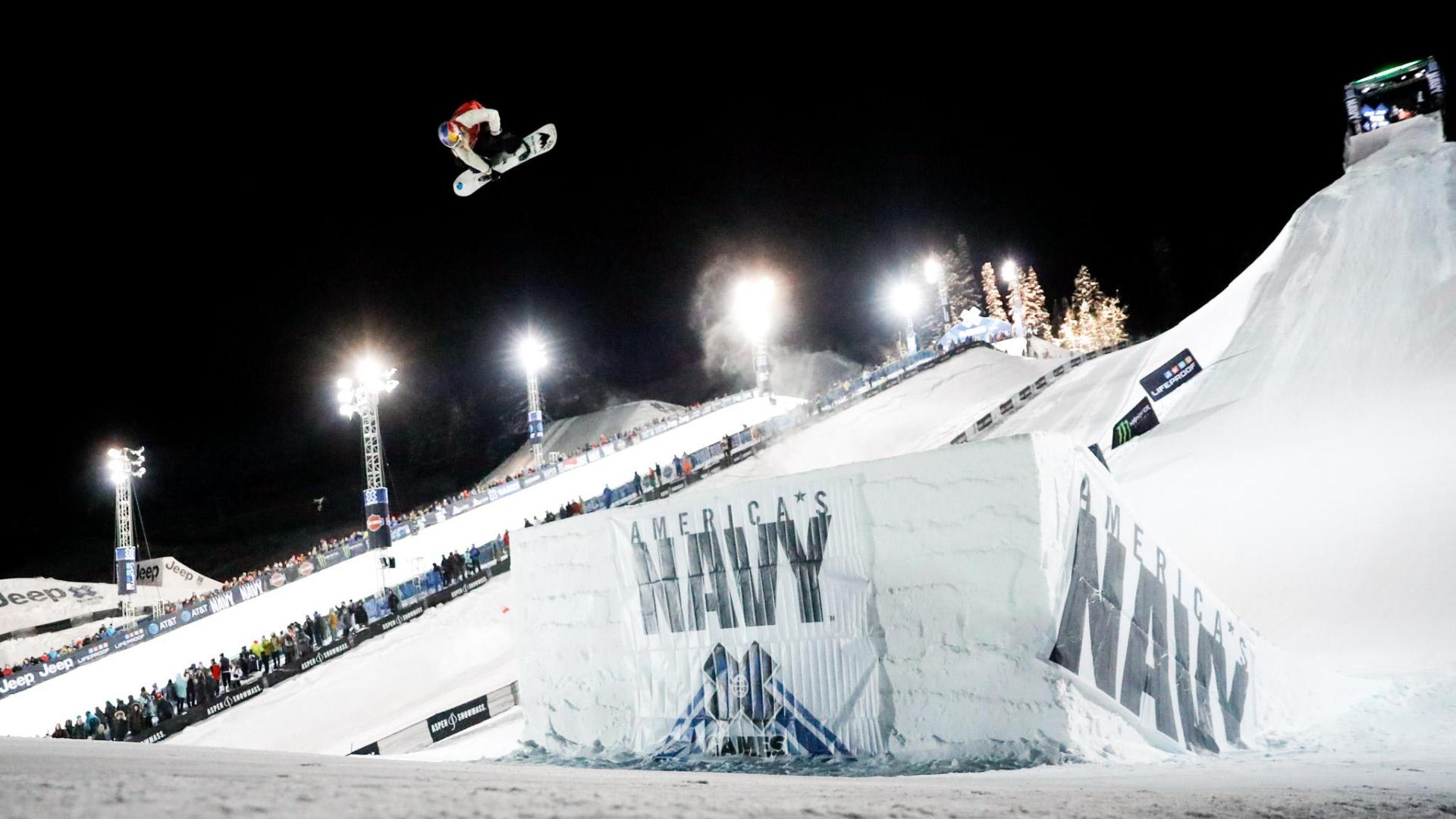
Big air competitions are contests where riders perform tricks after launching off a man made jump built specifically for the event.[37] Competitors perform tricks in the air, aiming to attain sizable height and distance, all while securing a clean landing. Many competitions also require the rider to do a complex trick. But not all competitions call for a trick to win the gold; some intermittent competitions are based solely on height and distance of the launch of the snowboarder. Some competitions also require the rider to do a specific trick to win the major prize.[38] One of the first snowboard competitions where Travis Rice attempted and landed a "double back flip backside 180" took place at the 2006 Red Bull Gap Session.[39]
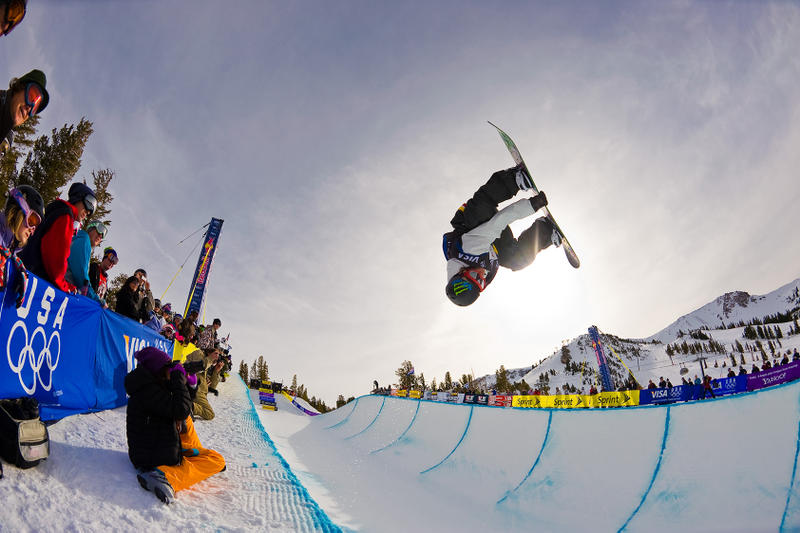
The half-pipe is a semi-circular ditch dug into the mountain or purpose-built ramp made up of snow, with walls between 8 and 23 feet (7.0 m). Competitors perform tricks while going from one side to the other and while in the air above the sides of the pipe.
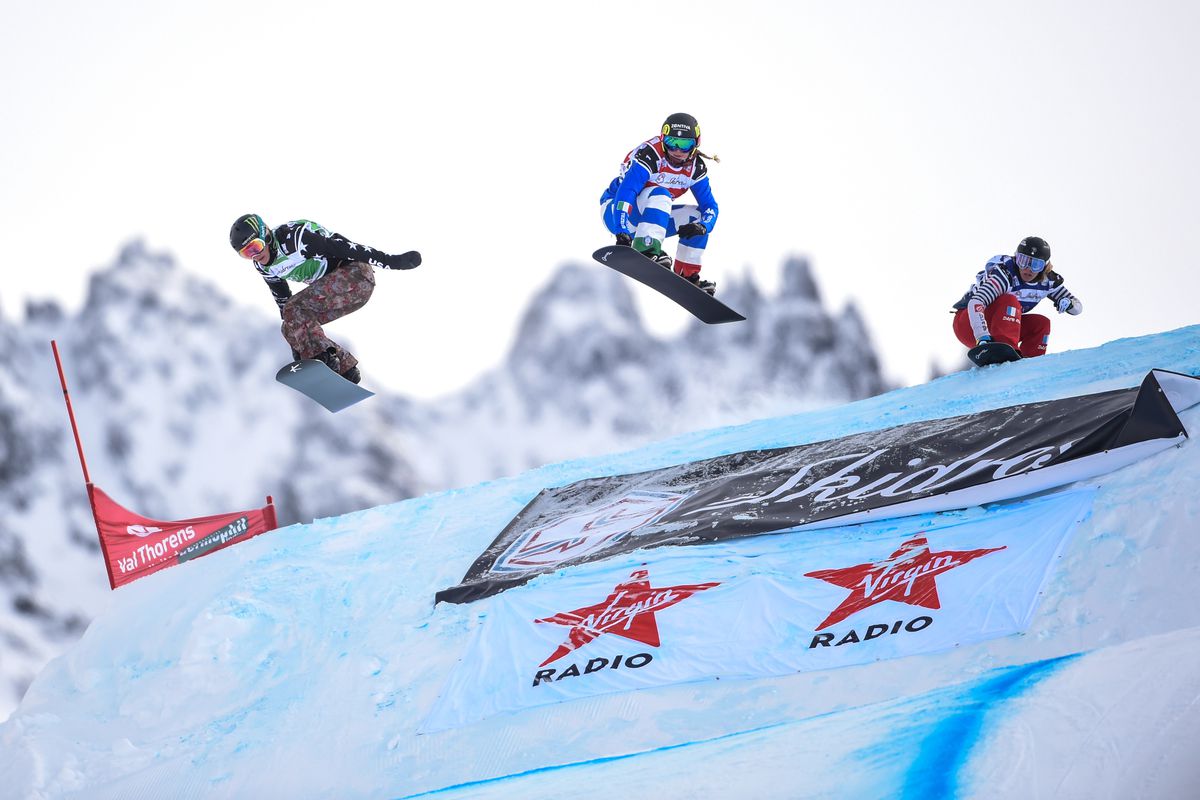
Boardercross, also known as "Boarder X" and "Snowboard X", is a very popular but relatively recent winter sport, starting in the 1980s and earning its place as an official Winter Olympic sport in the 2006 Turin games. In Boardercross, several riders (usually 4 to 6) race down a course similar to a motorcycle motocross track (with jumps, berms and other obstacles constructed out of snow on a downhill course). Unlike traditional head-to-head races, competitors use the same terrain, sometimes resulting in accidental collisions.
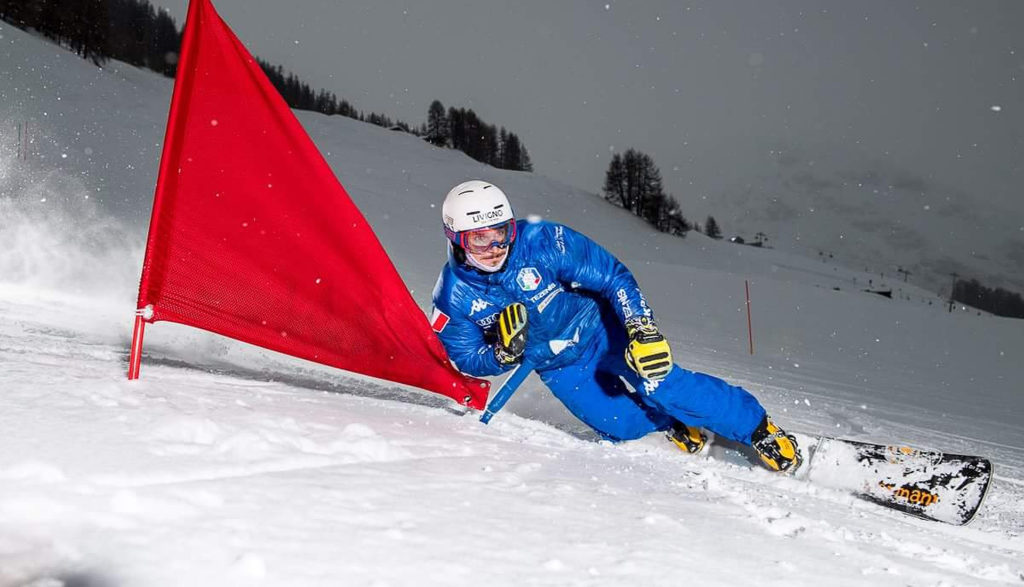
In snowboard racing, riders must complete a downhill course constructed of a series of turning indicators (gates) placed in the snow at prescribed distances apart. A gate consists of a tall pole, and a short pole, connected by a triangular panel. The racer must pass around the short side of the gate. There are 3 main formats used in snowboard racing including; single person, parallel courses or multiple people on the course at the same time (SBX).